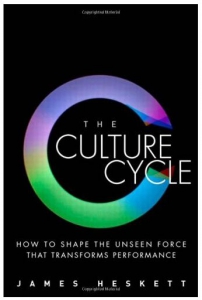 The greatest predictor of profitability for businesses is customer loyalty and the greatest predictor of customer loyalty is employee engagement. Thought leader and author of The Culture Cycle, James Heskett, demonstrates how an effective culture can account for up to half of the differential in performance between organizations in the same industry.
The greatest predictor of profitability for businesses is customer loyalty and the greatest predictor of customer loyalty is employee engagement. Thought leader and author of The Culture Cycle, James Heskett, demonstrates how an effective culture can account for up to half of the differential in performance between organizations in the same industry.
Today the intangible assets of a company, including brand, customer relationships, leadership, ability to innovate and the talent management practices and culture of the organization, comprise 65% to 85% of its total value. This is a huge shift from the 1980’s when over 60% of a company’s total worth was based on its tangible assets – equipment, technology, facilities, equipment and resources. This shift in the way companies are valued is forcing organizations to focus on their culture, and more specifically, how they attract, align and retain their most valuable resource, their employees.
Southwest Airlines, Wal-Mart, IBM, ING, 3M, and Proctor and Gamble are some of the organizations experiencing success and growth due to their highly effective cultures and employee engagement practices.
In his book, James Heskett describes the 8 cyclical steps in what he has termed, The Culture Cycle:
1. Mission, Shared Assumptions and Values — Alignment with Strategies and Methods of Execution
2. Setting Expectations
3. Behaviors Consistent with Shared Assumptions and Values
4. Expectations (e.g. leadership, recognition, job opportunity, personal development)
5. Core Phenomena (Trust, Employee Engagement, and Ownership)
6. Policies, Practices, and Behaviors (e.g. self-direction, accountability, transparency, collaboration)
7. Organization Learning (e.g. continuous improvement, adaptability, agility, and speed)
8. Results (Four Rs, innovation, growth, and profitability)
The 4 R’s in step 8 can be thought of as your culture’s key performance indicators. “The results of an effective culture can be (but rarely are) documented and tracked:
- Referrals: A higher proportion of potential employees recommended by current or former employees.
- Retention: Lower recruiting, hiring, training, and lost productivity costs because of greater employee loyalty.
- Returns to labor: Greater productivity per dollar of compensation.
- Relationships: Better customer relationships, resulting in greater loyalty, lower customer acquisition costs, and more sales.”
Heskett is not alone in his viewpoint that in today’s competitive world you cannot be successful in the marketplace without first being successful in the workplace. Today’s ever changing business environment demands attention to the way we attract, align and retain the employees that are most vital to the success of our organizations.
Author: George Albert Opitz

